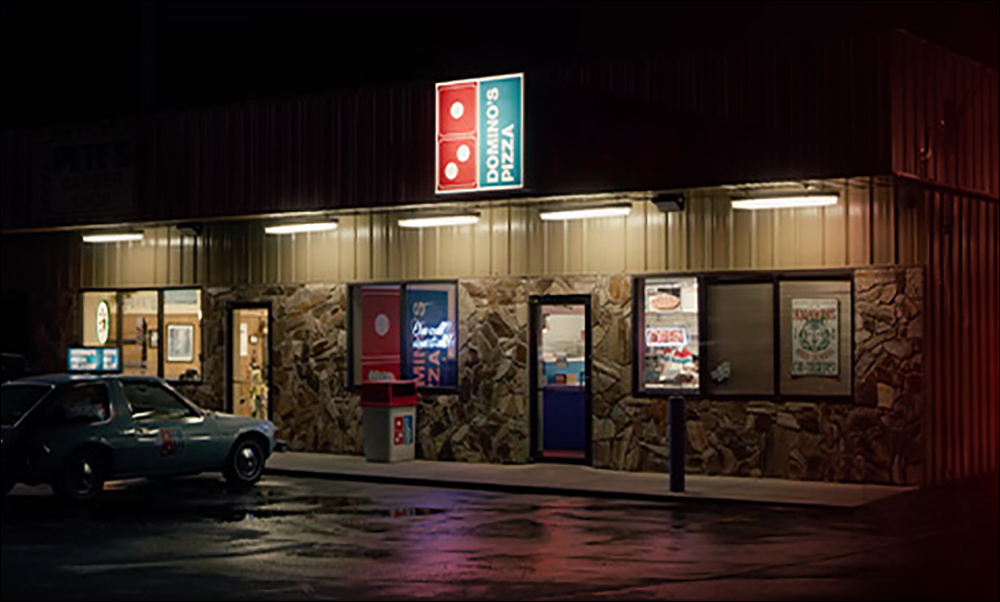- Beginning with VoIP and Expanding to IoT
- Automated Temperature Reports for Food Inspectors
- Proprietary RFID with 10-Year Battery Life
Nov 04, 2022Managing a busy restaurant like Domino's Pizza depends on an ordering system that is reliable, and on knowledge of conditions at the business as food is stored, prepared and then delivered to customers. Until recently, a business franchise in Springfield, Mass., relied on staff members to make sure every call was answered, coolers were never left open and equipment was operating properly.
The Domino's franchise known as Springfield Pie, located in Springfield Mass., has deployed a technology-based solution to accomplish both phone order management and the real-time sensor tracking of conditions onsite. The Internet of Things (IoT) solution, supplied by Unified Office, provides the business with support for responding to customer calls, software management and the display of data on all aspects of its operations. It also sends alerts directly to managers as needed, according to Augusto (Gus) Garcia, the franchisee president of six Domino's restaurants in Springfield.

Unified Office is selling that same solution, known as Total Connect NowSM Operational Performance Suite (TCNOPS), to other restaurants to help them automate and optimize infrastructure, improve food safety and efficiencies, and ensure compliance for health inspectors. The TCNOPS system enables users to manage refrigeration, oven exhaust fans, thermostats, air conditioners, safe doors, security and power to neon signs, says Ray Pasquale, Unified Office's CEO and founder. TCNOPS, he adds, helps customers identify problems before they can happen, preventing product losses and service interruptions, as well as helping to ensure regulatory compliance.
The solution consists of Monnit's proprietary IoT sensors, powered by batteries. The company's ALTA Wireless Sensor networks operate on the 902 to 928 MHz radio band, as well as the 868 MHz, 433 MHz and 940 MHz bands. The sensors transmit data to a gateway that forwards the information to Unified Office's software platform. The restaurant in Springfield took the business communications services live in 2017, and last year it added temperature management via IoT-based proprietary RFID sensors.
Beginning with VoIP and Expanding to IoT
For Garcia, the phone-management capability has allowed for more reliable phone service. Employees can use the service to take calls from their own phones, even at home, while incoming calls can be monitored and rated via artificial intelligence so that the company knows if a call is missed, or if a customer's request was not satisfied. United Office's Sentiment Analysis Suite (TCNIQ) uses AI to detect a caller's exuberance, happiness, sadness or anger, and it allows "ghosting" on customer calls, to provide training as new employees take orders over the phone.

Gus Garcia
In the case of a such a call (also known as a "whisper call"), when a new employee takes a customer call, a manager or trainer can be on the call as well, even from a remote location, and their voice will be heard only by the worker, not the customer. In that way, as the conversation proceeds, the manager can provide advice to the trainee, according to what the customer is asking for. They can, for instance, remind the employee, as the ordering wraps up, to ask if there is anything else the patron would like to add to the order, such as a beverage.
Unified Office provided Domino's with a large-screen monitor that displays the latest results regarding how employees answer calls. The system gives them a rating, with green indicating a call was responded to quickly and the order was taken properly. A needle similar to a speedometer ticks toward red if the speed or response falls outside acceptable parameters. "In this way," Garcia says, "Unified Office shows me how much money I am losing for not answering the phones on time," due to a call being lost.
Last year, Unified Office installed six IoT sensors at Domino's that monitor the temperatures within walk-in coolers, on "make lines" where pizzas are made, and inside a beverage cooler. The single gateway receives temperature readings from each sensor every 15 minutes, and that data is forwarded to the Unified Office software platform, hosted in the cloud.
Automated Temperature Reports for Food Inspectors
With the IoT sensors in place, temperature data is displayed on the monitor, with red indicating the temperature is either too warm or too cold. "It tells me, [for] every single refrigeration unit, what the temperature is in that moment," Garcia explains. If workers are so busy that no one notices or responds to the display, Garcia can receive notifications on his phone. "It saved me tons of time and tons of money for not having expired food going bad."

Ray Pasquale
The restaurant has no frozen food onsite, Garcia says. All ingredients used in the pizza are stored in refrigeration units, or in the two make lines. During the past few years, Domino's has employed a food quality inspection company, Ecolab, that visits the stores approximately every three months to ensure the proper storage of the temperature-sensitive ingredients. The inspector expects to see a 30-day report of temperatures during each visit, Garcia says.
Since Unified Office installed the Monnit sensor-based technology, Domino's has been able to automatically print a report that lists temperatures. Without the system, collection of that kind of data might require employees to stop what they are doing and record temperatures throughout their shift, which would impact their productivity. "That's very hard to do manually," Garcia points out.
When choosing the IoT-based temperature-management system, Garcia recalls, the company found that there were multiple technology suppliers offering temperature-tracking solutions, and that low-cost sensors were available on Amazon. However, he notes, they tended to be less effective. Therefore, Garcia opted to use the restaurant's existing phone service technology provider (Unified Office) to build out the IoT system.
Proprietary RFID with 10-Year Battery Life
Unified Office initially launched with a phone service for multiple industries in late 2014. Pasquale comes from a background building voice-over-IP (VoIP) services for some of the largest telecom operators. He recalls receiving a phone call in 2014 from a telecom agent that its customers were complaining about their VoIP services not working, "We set out to fix that, and then we developed real-time analytics that sat on top of that," he says, which evolved to the analytics it can now provide, both in the cloud and on a large screen monitor or smartphone.
Recently, a restaurant approached Unified Office to say it suffered from a simple mistake: an employee had forgotten to close the refrigerator door. As a result, it had to throw away food and close the store to restock. That error cost the restaurant thousands of dollars, but it led Unified Office to begin offering IoT solutions.
The company explored sensors from a variety of providers, as well as multiple technologies that include Zigbee, Z-Wave, LoRa, Bluetooth Low Energy (BLE), ultra-wideband (UWB) and Wi-Fi. However, Pasquale says, such technologies were all limited in their effectiveness. For one thing, restaurants inherently provide RF transmission challenges. "There is a lot of metal," he states. "They can be like big Faraday cages." Eventually, the company found that the proprietary RF sensor from Monnit operated well. It also offered a 10-year battery life.
With the sensors in place, Unified Office's software can detect an impending event as temperatures change, such as a compressor failure. If companies choose to, they can use sensors to detect when fans over ovens are not rotating properly. "We can we even arm the neon open and closed sign," Pasquale says, to detect when it is not working properly. The system also provides air-conditioner management at the restaurant in case someone leaves the air on all night. Users can configure the alerting process as needed—for instance, they can configure how frequently they want to be alerted, as well as how.
While Garcia's franchise of Domino's restaurants is now employing the system at its busiest store, his plan is to expand the technology to his additional five sites, as well as at a new store slated to go live next year. For the deployments at those other restaurants, Garcia says he plans to forego the large screen since the system provides the same data via apps and alerts. "It's really not necessary anymore," he states.
Key Takeaways:
- A Domino's Pizza franchise is leveraging an IoT solution from Unified Office to ensure food remains at the correct temperature at all times.
- With the technology, the restaurants can track historical data to provide records to inspectors, as well as to identify trends.

